
क्या राजस्थान में भी ऑर्किड होते हैं?
ऑर्किड़ वानस्पतिक कुल ऑर्किडेसी के सदस्य होते हैं। वानस्पतिक जगत में कैक्टस एवं ऑर्किड अपने खूबसूरत फूलों के लिये जाने व पसंद किये जाते हैं। कैक्टस जहाँ सूखी व गर्म जलवायु पसंद करते हैं वहीं आर्किड नम एवं ठंडी जलवायु चाहते हैं। राजस्थान के बारे में सामान्य जानकारी रखने वाला सुदूर रहने वाला गैर-राजस्थानी प्रायः यही धारणा रखता है कि राजस्थान एक सूखा, रेगिस्तानी, तपता हुआ राज्य होगा। लेकिन यह सत्य नहीं है। जैसे ही ऐसी धारणा वाले लोगों को पता चलता है कि राजस्थान में खूबसूरत फूल देने वाले ऑर्किड भी अच्छी खासी संख्या में उगते हैं तो उनका चौंकना लाजिमी है। आइये आपको मिलाते है राजस्थान के सुन्दर ऑर्किडों से जो जगह-जगह जंगलों को आबाद किये हुऐ हैं।
राजस्थान में 10 वंश के 19 प्रजातियों के आर्किड अभी तक ज्ञात हो चुके हैं। इनमे थलीय आर्किडों की 13 तथा उपरिरोही आर्किडों की 6 प्रजातियाँ ज्ञात हैं। हैबेनेरिया वंश के ऑर्किड राजस्थान में सर्वाधिक ज्ञात हैं। इस वंश की 5 प्रजातियों को अभी तक राजस्थान से ढूँढा जा चुका है।
नीचे प्रस्तुत सारणी मे राजस्थान के ऑर्किडों की एक झलक मिलती है:
| क्र.सं. | आवास | प्रजातियाँ | मिलने के कुछ ज्ञात स्थान |
| 1. | उपरिरोही | एकैम्पे प्रेमोर्सा (Acampe praemorsa) | सीतामाता अभ्यारण्य, फुलवारी की नाल अभ्यारण्य, फलासिया क्षेत्र अन्तर्गत नला गाँव के वन क्षैत्र आदि |
| 2. | उपरिरोही | एरीडीज क्रिस्पम (Aerides crispum) | बाँसवाडा वन क्षेत्र, फुलवारी की नाल अभ्यारण्य, उदयपुर जिले के वन क्षेत्र, माउन्ट आबू, डुँगरपुर वन क्षेत्र, सीतामाता अभ्यारण्यआदि |
| 3. | उपरिरोही | एरीडीज मैक्यूलोसम (Aerides maculosum) | सिरोही, फुलवारी की नाल, नला गाँव के क्षेत्र (फलासिया रेंज) आदि |
| 4. | उपरिरोही | एरीडीज मल्टीफ्लोरम (Aerides multiflorum) | माउन्ट आबू |
| 5. | उपरिरोही | वैन्डा टैसीलाटा(Vanda tessellata) | सांगबारी भूतखोरा, पीपल खूँट, पूना पठार (सभी बाँसवाडा जिले के वन क्षेत्र), फुलवारी की नाल, सीतामाता माउन्ट आबू, शेरगढ अभ्यारण्य बाँरा जिला में सीताबाडी, मुँडियार नाका के जंगल, कुण्डाखोहय प्रतापगढ वन मंडल के वन क्षेत्र आदि |
| 6. | उपरिरोही | वैन्डा टैस्टेशिया(Vanda testacea) | माउन्ट आबू |
| 7. | थलीय ऑर्किड | एपीपैक्टिस (Epipactis veratrifolia) | मेनाल क्षेत्र |
| 8. | थलीय ऑर्किड | नर्वीलिया ऑरैगुआना(Nervilia aragoana) | सीतामाता अभयारण्य, फुलवारी की नाल अभयारण्य, नला गाँव के आस पास के वन क्षेत्र (रेंज फलासिया एवं उदयपुर) आदि |
| 9. | थलीय ऑर्किड | जुक्जाइन स्ट्रेटूमैटिका (Zeuxine strateumatica) | मांगरोल, अटरू (बाँरा), कुम्भलगढ अभयारण्य, निवाई, दुर्गापुरा (जयपुर), मेजा बाँध (भीजवाडा), झोला (बाँसवाडा), दौसा, टॉडगढ (अजमेर), खाजूवाला (बीकानेर), 34 जी.बी. (श्रीगंगानगर) आदि |
| 10. | थलीय ऑर्किड | यूलोफिया ऑक्रीएटा (Eulophia ochreata) | घाटोल रेंज के वनक्षेत्र, माउन्ट आबू, सीतामाता अभयारण्यय पट्टामाता (तोरणा प्), तोरणा प्प् (रेंज ओगणा, उदयपुर), फुलवारी की नाल अभयारण्य, कुम्भलगढ अभयारण्य, गौरमघाट (टॉडगढ-रावली अभयारण्य) आदि |
| 11. | थलीय ऑर्किड | यूलोफिया हर्बेशिया(Eulophia herbacea) | गामडी की नाल एवं खाँचन की नाल (फुलवारी अभयारण्य) |
| 12. | थलीय ऑर्किड | हैबेनेरिया डिजिटाटा(Habenaria digitata) | सीतामाता अभयारण्य, शाहबाद रेंज वन क्षैत्र, माउन्ट आबू आदि |
| 13. | थलीय ऑर्किड | है. मार्जिनाटा(H. marginata) | माउन्ट आबू अभयारण्य |
| 14. | थलीय ऑर्किड | है.फर्सीफेरा(H. furcifera) | फुलवारी की नाल अभयारण्य, कुम्भलगढ अभयारण्य, गोगुन्दा तहसील के वन क्षेत्र एवं घास के बीडे, सीतामाता अभयारण्य आदि |
| 15. | थलीय ऑर्किड | है.प्लैन्टीजीनिया(H. plantaginea) | उभेश्वर वन क्षेत्र (उदयपुर) |
| 16. | थलीय ऑर्किड | है.लॉन्गीकार्नीकुलेटा(H. longicorniculata) | माउन्ट आबू अभयारण्य, गोगुन्दा व झाडोल रेंज के वन क्षेत्र (उदयपुर), कुम्भलगढ अभयारण्य |
| 17. | थलीय ऑर्किड | पैटीस्टालिस स्टोक्सी ( Peristylus stocksy) | माउन्ट आबू |
| 18. | थलीय ऑर्किड | पैरीस्टाइलिस कॉन्सट्रिक्ट्स (Peristylus constrictus) | सीतामाता एवं फुलवारी की नाल अभयारण्य |
| 19. | थलीय ऑर्किड | जीयोडोरम रीकर्वम(Geodorum recurvum) | सीतामाता अभयारण्य |
ऑर्किडों की दृष्टी से राजस्थान में माउन्ट आबू, फुलवारी की नाल (फुलवाडी की नाल) एवं सीतामाता अभयारण्य सबसे समृद्ध हैं। इन तीनों अभ्यारण्यों में जलीय एवं उपरिरोही दोनों स्वभावों वाले ऑर्किड पाये जाते हैं। शेरगढ अभयारण्य मे भी दोनों स्वभावो वाले ऑर्किड पाये जाते हैं। कुम्भलगढ एवं टॉडगढ रावली अभ्यारण्यों में केवल थलीय आर्किडों की उपस्थिती दर्ज है। इस तरह अभी तक राजस्थान के निम्न तरह कुल 6 अभयारण्यों में आर्किडों की निश्चायत्मक उपस्थिती दर्ज हुई है:
| क्रमांक | संरक्षित क्षेत्र का नाम | ऑर्किडों का प्रकार |
| 1. | माउन्ट आबू अभयारण्य | वृक्षिय (उपरिरोही) एवं थलीय |
| 2. | फुलवारी की नाल अभयारण्य | वृक्षिय (उपरिरोही) एवं थलीय |
| 3. | सीतामाता अभयारण्य | वृक्षिय (उपरिरोही) एवं थलीय |
| 4. | शेरगढ अभयारण्य | वृक्षिय (उपरिरोही) एवं थलीय |
| 5. | कुम्भलगढ अभयारण्य | थलीय |
| 6. | टॉडगढ रॉवली | अभयारण्य थलीय |
राजस्थान में ऑर्किडों का सबसे सघन जमावडा गुजरात सीमा पर स्थित उदयपुर जिले की कोटडा एवं झाडोल तहसीलों में फैली फुलवारी की नाल अभयारण्य में पाया जाता है। यहाँ कटावली जेर नामक स्थान मे अम्बावी से लेकर डैया व कवेल तक महुआ कुंजों मे उपरिरोही ऑर्किडों की विद्यमानता से बना प्राकृतिक ’’ ऑर्किडेरियम’’ देखने लायक है। मध्य जून से मध्य अगस्त तक यहाँ ऑर्किडों के फुलों को देखने का आनन्द लिया जा सकता है। मानसून के जल्दी या विलम्ब से आने एवं हवा की नमी की स्थानीय अवस्थायें पुष्पन को थोडा आगे-पीछे कर देती हैं। इसी अभयारण्य में अम्बावी से अम्बासा तक की यात्रा में भी उपरिरोही ऑर्किडों को पुष्पन काल में देखने का आनन्द लिया जा सकता है। फुलवारी की नाल में गामडी की नाल एवं खाँचन की नाल में जगह – जगह स्थलीय ऑर्किडों को जून से सितम्बर तक देखा जा सकता है।
सीतामाता एवं माउन्ट आबू अभयारण्य भी अपने आर्किडों हेतु जाने जाते हैं। सीतामाता अभयारण्य में आम, चिरौंजी एवं महुओं पर उपरिरोही ऑर्किडों की अच्छी उपस्थिती दर्ज है। वाल्मिक आश्रम से सीतामाता मंदिर के रास्ते के दोनों तरफ, आरामपुरा एवं जाखम डैम रोड के आस- पास के क्षेत्र उपरिरोही ऑर्किडों के सुन्दर आश्रय स्थल हैं। वाल्मिकी आश्रम के आसपास का क्षेत्र थलीय ऑर्किडों को देखने का अद्भुत स्थान है। यहाँ वर्षा ऋतु में थलीय ऑर्किडों की मनोहारी झाँकी अद्भुत होती है। खास कर नर्वीलिया ऑरैगुआना का जून माह में पुष्पन तथा वर्षा का दौर प्रारंभ होते ही पत्तियों की फुटान का दृश्य अतुलनीय नजारा पेश करते हैं।
माउन्ट आबू में उपरीरोही ऑर्किड खजूरों, एरीथ्रीना, आम, जामुन आदि पर मिलने हैं। यहाँ ऑर्किडों के पनपने की सबसे अनुकूल प्राकृतिक दशायें विद्यमान हैं। विभिन्न ट्रेलों पर भ्रमण के दौरान लैन्टाना की झाड़ियों मेें छुपे एवं घासों में स्थित थलिय ऑर्किड वर्षाकालीन भ्रमण का आनंद बढा देते हैं।
शेरगढ अभयारण्य में महुओं पर उपरिरोही ऑर्किड जगह – जगह मिलते हैं। बाराँ जिले की शाहबाद तहसील में जायें तो वैन्डा, टैसीलाटा ऑर्किड महुओं व चिरौंजी के बडे आकार व पुराने वृक्षों पर आसानी से देखे जा सकते हैं।
वन विभाग, राजस्थान ने अपनी आर्किड संपदा को परिस्थितिकी पर्यटन से जोडने का गंभीर प्रयास किया है। वन मण्डल उदयपुर (वन्यजीव) अन्तर्गत फुलवारी की नाल अभयारण्य में पानरवा रेंज अन्तर्गत वन विश्राम गृह के पास एक छोटा ऑर्किडेरियम (आर्किड उद्यान) स्थापित किया है जहाँ राजस्थान के ऑर्किडों का संग्रह किया गया है। इस उद्यान का उद्घाटन तत्कालीन वन मंत्री श्री गजेन्द्र सिंह खींवसर ने 18 अगस्त, 2017 को किया था। इस उद्यान को जून से सितम्बर तक देखना आनन्ददायक होता है क्योंकि उस समय यहाँ आर्किडों में सुन्दर रंग – बिरंगे फूल आ जाते हैं।
ऑर्किडों के प्रति जन – जागृति लाने एवं राजस्थान के ऑर्किडों की जानकारी जन सामान्य को देने हेतु 27 से 29 जुलाई, 2018 के उदयपुर में सज्जनगढ अभयारण्य के मुख्य द्वार के सामने ’’आर्किड प्रदर्शनी’’ भी वन विभाग द्वारा लगाई गई जिसमें राजस्थान के ऑर्किडों का आम जनों को दिग्दर्शन कराया गया।
सार रूप में हम कह सकते हैं राजस्थान की जलवायु भले ही सूखी और गर्म हो लेकिन यहाँ 19 प्रजातियों के ऑर्किड पाये जाते हैं जिनका सार निम्न हैः
| क्र.सं. | आवास | वंश | जातियाँ |
| 1. | उपरिरोही | अकम्पे मोरसा | 1 |
| 2. | उपरिरोही | एरीडीज | 3 |
| 3. | उपरिरोही | वैन्डा | 2 |
| 4. | थलीय | ऐपीपैक्टिस | 1 |
| 5. | थलीय | नर्वीलिया | 1 |
| 6. | थलीय | जुक्जाइन | 1 |
| 7. | थलीय | यूलोफिया | 2 |
| 8. | थलीय | हैबेनेरिया | 5 |
| 9. | थलीय | पैरीस्टाइलिस | 2 |
| 10. | थलीय | जीयोडोरम | 1 |
राजस्थान के वनों में और ऑर्किड प्रजातियाँ मिलने की प्रबल संभावना है। फुलवारी, सीतामाता, कुम्भलगढ, माउन्ट आबू एवं शेरगढ अभयारण्यों एवं उनके आस- पास (खास कर झाडोल, कोटडा, गोगुन्दा एवं शाहबाद तहसीलो के वन क्षेत्र) के वनों में गहन अध्ययन एवं सर्वेक्षण की जरूरत है क्योंकि यहाँ की सूक्ष्म जलवायु जगह-जगह आर्किडों हेतु बहुत उपयुक्त है। आशा है आने वाले वर्षों में हमें राजस्थान मे नए आर्किडों का और पता चल सकेगा।
संदर्भ: इस लेख की अधिकांश सूचनाऐ लेखक की प्रकाशित निम्न पुस्तक पर आधारित हैं:
Sharma, S.K. (2011): Orchids of Desert and Semi – arid Biogeographic Zones of India
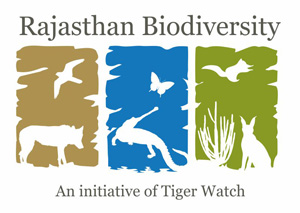

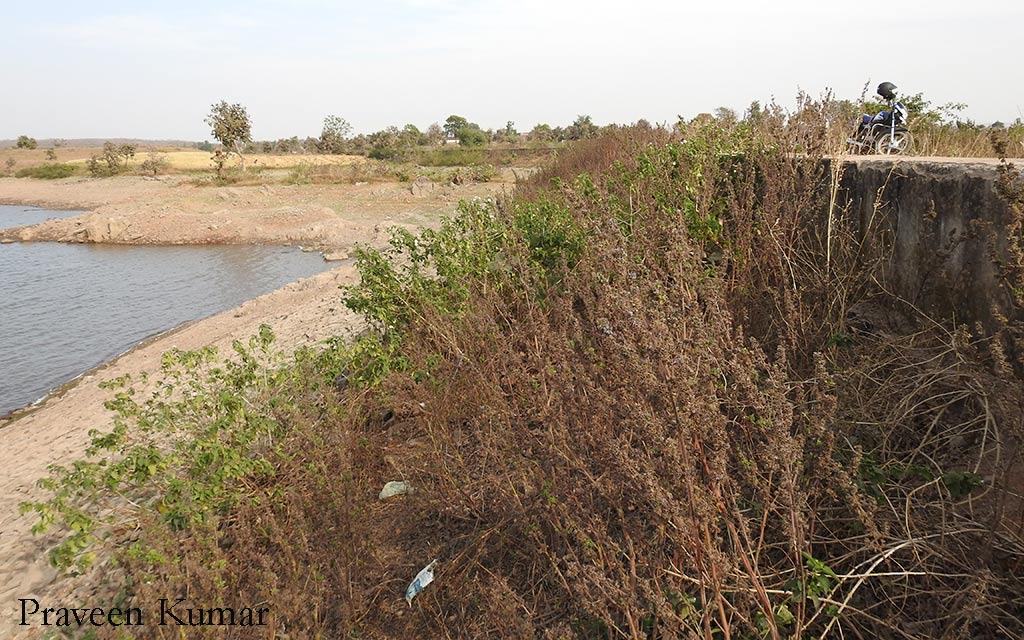
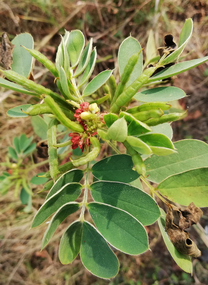
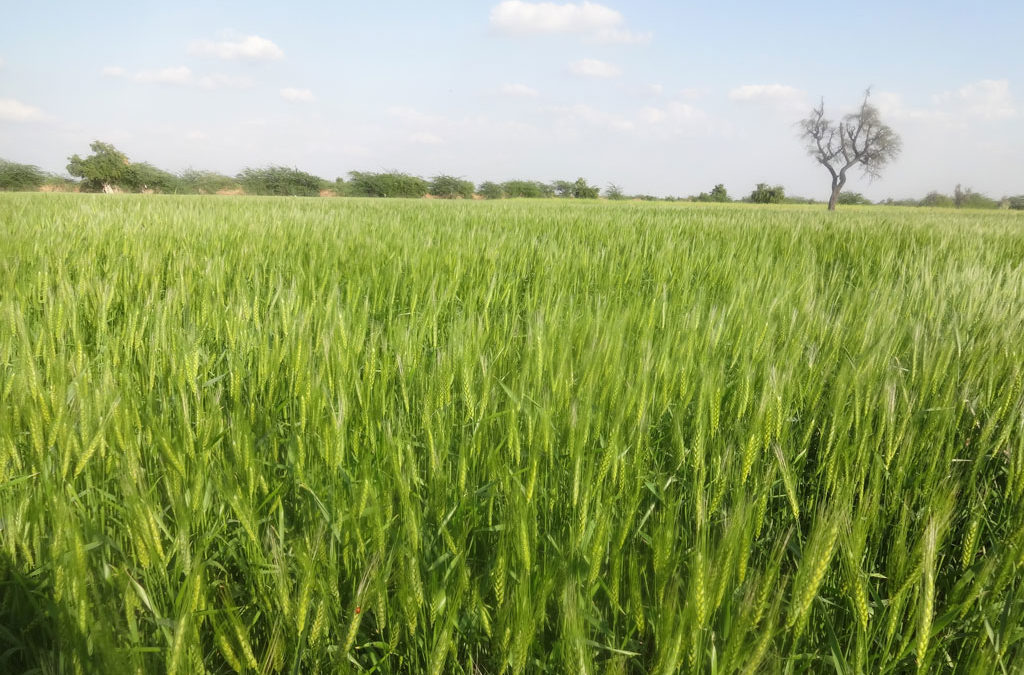
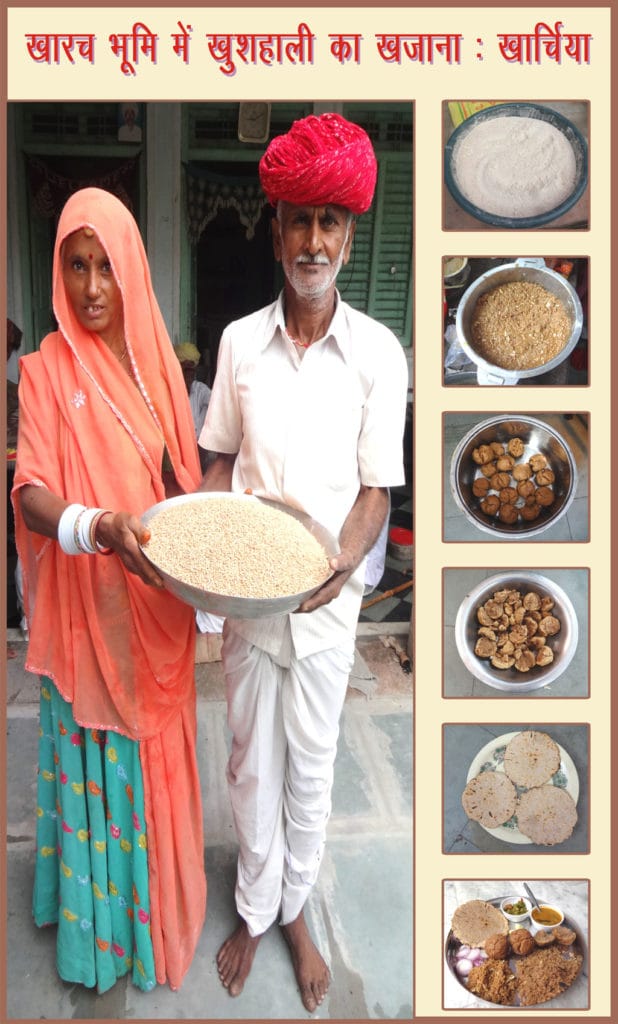
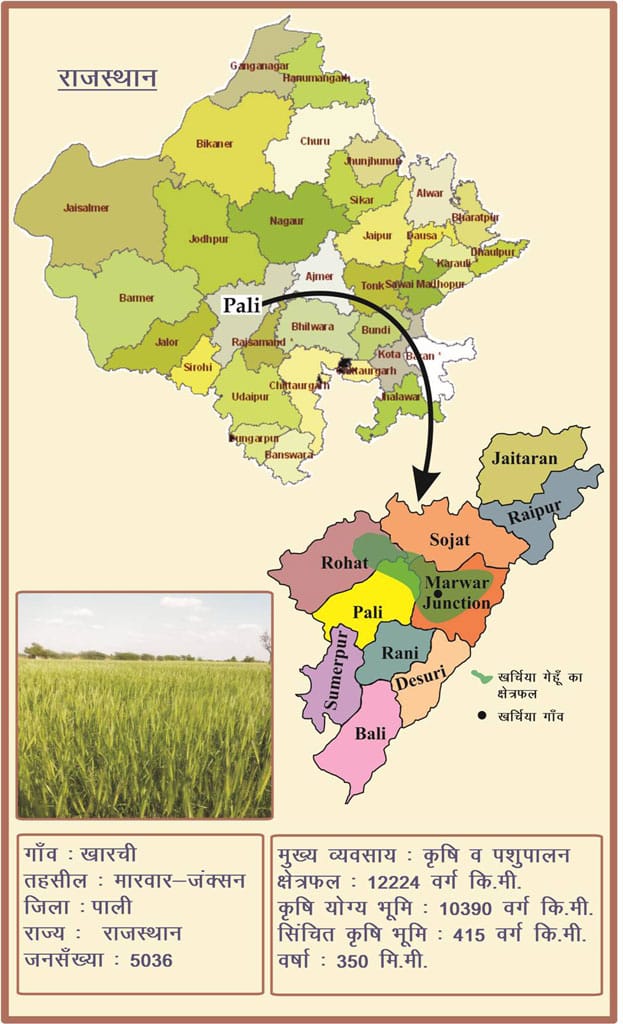


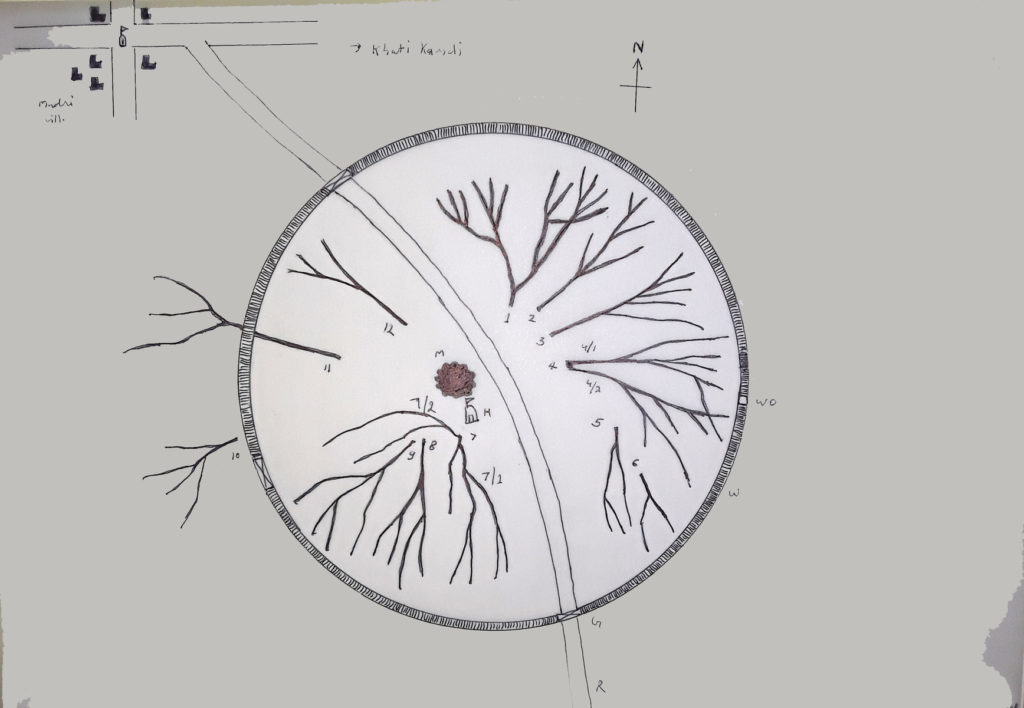





 रोहिड़ा का वृक्ष ( फोटो डॉ. धर्मेंद्र खांडल )
रोहिड़ा का वृक्ष ( फोटो डॉ. धर्मेंद्र खांडल )


